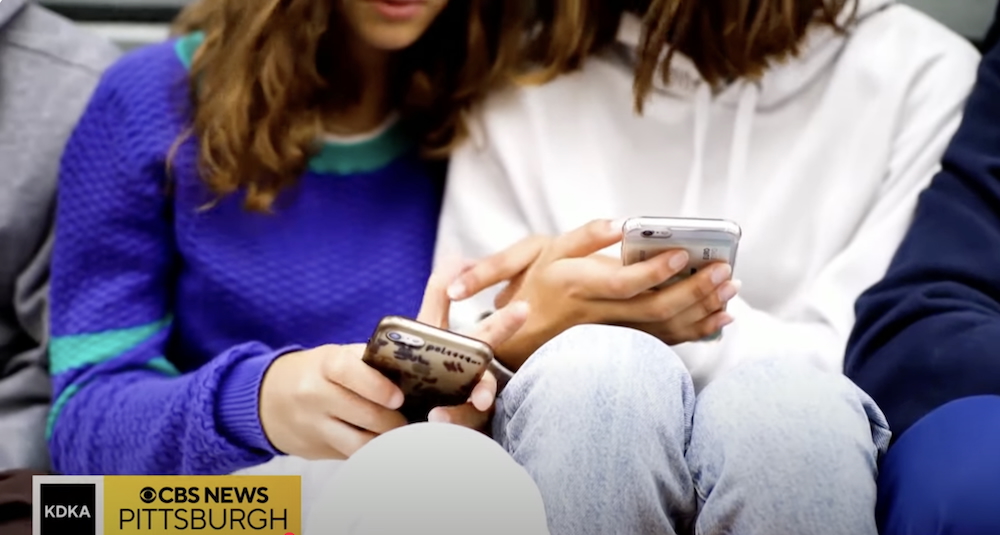
National coalition and child experts call on all schools to implement a phone-free policy
Schools across the country are grappling with what to do about cell phones and other devices that are often distracting in classrooms and harming the social and emotional learning of kids. A meta-analysis across 14 countries determined that cell phone use in schools negatively impacts educational outcomes, including test scores and GPA, according to Fairplay for Kids.
Recent studies also show a strong correlation between the increased use of smartphones and social media with increased rates of depression, anxiety, loneliness and suicidal ideation in young people.
On March 24, a coalition of more than 75 groups and child experts signed a letter calling on all schools to implement a phone-free policy. This includes the American Federation of Teachers and the National Education Association with almost five million members combined, as well as Jonathan Haidt, social psychologist and author of “The Anxious Generation.”
Almost all of today’s school-age kids have never known life without cell phones, given that the first iPhone was released in 2007. Policies around phones vary from school to school, as does enforcement. But now, more child experts and teachers’ groups are saying it’s time to get phones out of schools.
Two groups — Fairplay and Phone-Free Schools Movement — put together the coalition of organizations that signed a letter calling on schools to ban cell phones. It also includes groups like Common Sense Media, Mothers Against Media Addiction, and PLaTO-net.
“The time has come to remove phones from schools, and the way to do it effectively is to have ‘bell to bell’ restrictions,” says David Monahan, campaign manager at Fairplay. “So from the first bell of the morning until the last bell of the afternoon, phones are locked and away, and young people don’t have access. And when you do that, engagement increases. Education is more effective.”
Monahan says more and more research shows that phones can have a detrimental effect on kids’ well-being and learning. First off, he says, phones are distracting. On average, teenagers get 60 notifications during school hours.
Two-thirds of students say they get distracted by using a digital device in class, and 54% percent say they were distracted by other students using their devices. Studies also now indicate that the mere presence of a smartphone reduces a person’s ability to focus. And 72% of high school teachers consider cellphone distraction a major problem in their classrooms.
“Teachers don’t want to be playing police officer at the beginning of each class and reminding kids that they can’t use the phone in school,” Monahan says.
Phones are designed to be addictive, so kids and adults can’t resist the urge to check them.
This is because tech companies want to monetize cell phone users, says Melissa Henson, vice president of Parents Television and Media Council (PTC), which joined the coalition calling for phone-free schools.
“They’re using the same sort of psychological and neuroscientific research that gambling casinos use in order to keep people coming back and staying on for longer and longer periods of time,” Henson says. “So they’re hacking the brain in order to keep you hooked on the platform.”
One objection to phone-free schools is the issue of keeping kids safe in emergencies. However, Monahan points out that public safety experts are consistently advising that it is actually less safe for parents to have access to talking to their kids by phone during an emergency.
In schools that have gone phone-free, like Sto-Rox School District did in 2023, the improvement is palpable.
Monahan has talked with administrators at schools around the country that have implemented “bell to bell” phone-free school policies and says, “we’re finding time and again, there’s a little resistance up front. But then when young people see more engagement in classrooms, in lunchrooms, in the hallway, they’re really saying this is better. We’re glad that we made this change.”
At least eight states, including Ohio, Florida and California, have passed laws banning or restricting cell phones in schools. Pennsylvania now has a pilot program for a grant for schools to use phone-locking devices. Several countries have also banned phones in schools, including Great Britain, France and China.







